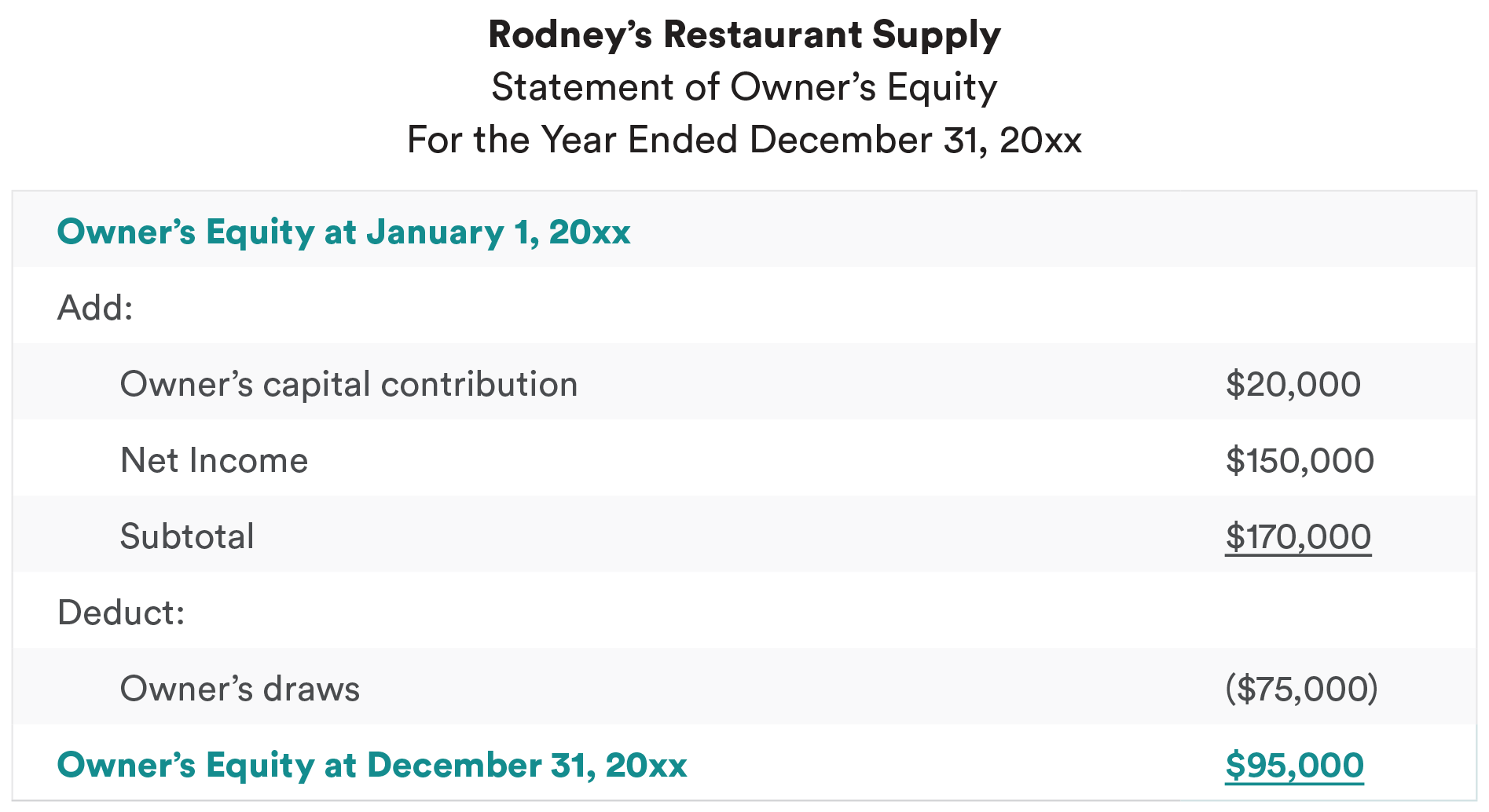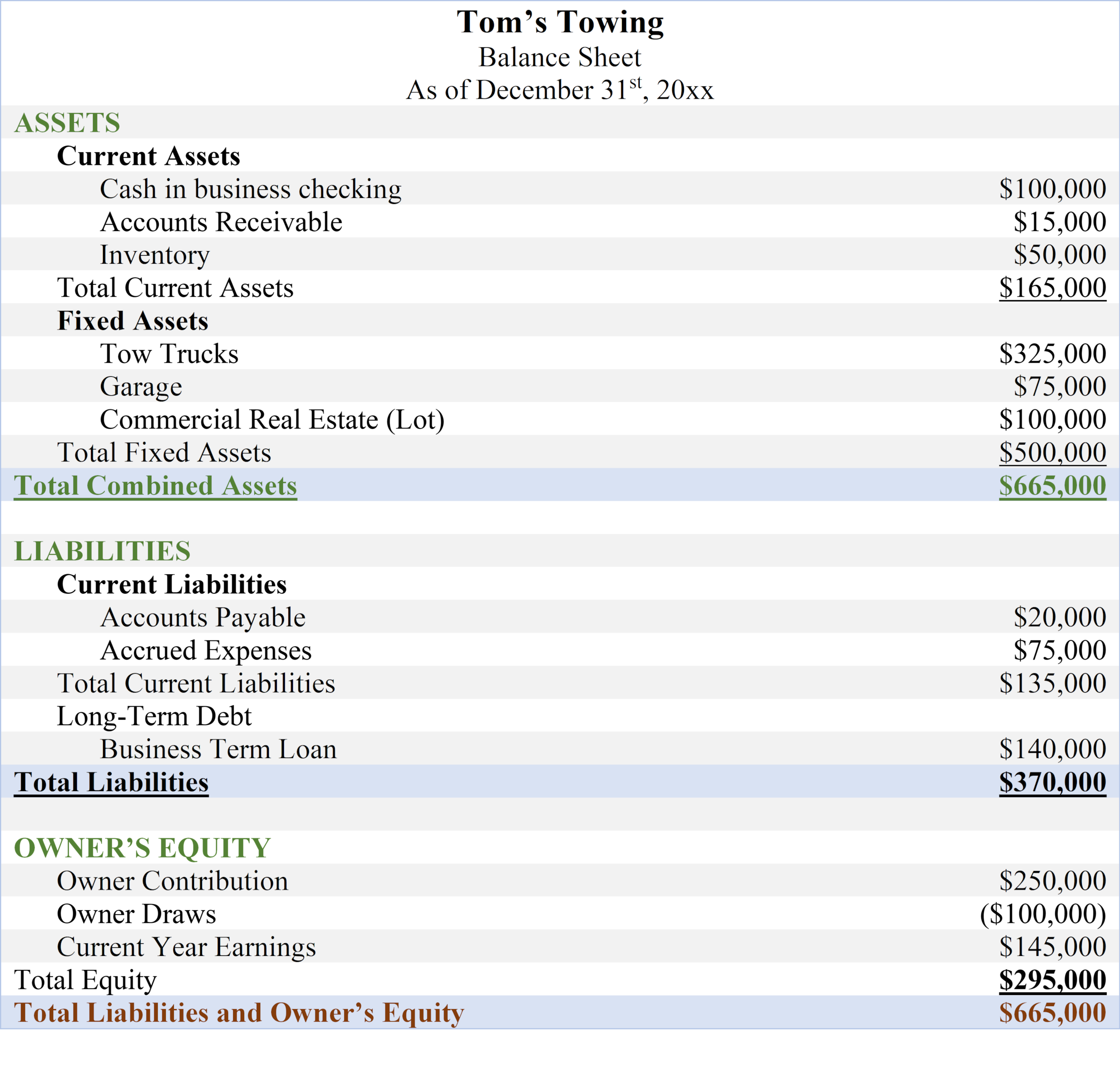What Is Owner's Equity On A Balance Sheet - The owner’s equity is recorded on the balance sheet at the end of the accounting period of the business. For llcs or corporations, the term used is shareholder’s or stockholder’s equity. Owner’s equity grows when an owner increases their investment or the company increases its profits. Owner’s equity is one of the three main sections of a sole proprietorship’s balance sheet and one of the components of the accounting equation: A negative owner’s equity often shows that a company has more. Owner’s equity is what is left over when you subtract your business’s liabilities from its assets. The amounts for liabilities and assets can be found within your equity accounts on a balance sheet—liabilities and owner’s equity. It is obtained by deducting the total liabilities from the total assets. Owner’s equity on a balance sheet. How owner’s equity is shown on a balance sheet.
Owner’s equity is listed on a company’s balance sheet. Owner’s equity on a balance sheet. The term is typically used for sole proprietorships. Owner’s equity grows when an owner increases their investment or the company increases its profits. Owner’s equity is what is left over when you subtract your business’s liabilities from its assets. A negative owner’s equity often shows that a company has more. How owner’s equity is shown on a balance sheet. The amounts for liabilities and assets can be found within your equity accounts on a balance sheet—liabilities and owner’s equity. Assets = liabilities + owner’s equity. Owner’s equity is one of the three main sections of a sole proprietorship’s balance sheet and one of the components of the accounting equation:
Assets = liabilities + owner’s equity. Owner’s equity is listed on a company’s balance sheet. Owner’s equity is what is left over when you subtract your business’s liabilities from its assets. It is obtained by deducting the total liabilities from the total assets. Owner’s equity on a balance sheet. A negative owner’s equity often shows that a company has more. Owner’s equity is part of the financial reporting process. Owner’s equity grows when an owner increases their investment or the company increases its profits. For llcs or corporations, the term used is shareholder’s or stockholder’s equity. The term is typically used for sole proprietorships.
Owner’s Equity What It Is and How to Calculate It Bench Accounting
The amounts for liabilities and assets can be found within your equity accounts on a balance sheet—liabilities and owner’s equity. Owner’s equity is what is left over when you subtract your business’s liabilities from its assets. Owner’s equity grows when an owner increases their investment or the company increases its profits. Owner’s equity is listed on a company’s balance sheet..
Balance Sheet Key Indicators of Business Success
How owner’s equity is shown on a balance sheet. Owner’s equity on a balance sheet. Owner’s equity is one of the three main sections of a sole proprietorship’s balance sheet and one of the components of the accounting equation: The amounts for liabilities and assets can be found within your equity accounts on a balance sheet—liabilities and owner’s equity. The.
LESSON 72 Balance Sheet Information on a Work Sheet ppt download
Owner’s equity grows when an owner increases their investment or the company increases its profits. Owner’s equity is part of the financial reporting process. The term is typically used for sole proprietorships. Owner’s equity is what is left over when you subtract your business’s liabilities from its assets. Owner’s equity on a balance sheet.
Owner's Equity in Accounting AdrielzebClay
How owner’s equity is shown on a balance sheet. Owner’s equity is what is left over when you subtract your business’s liabilities from its assets. Owner’s equity is listed on a company’s balance sheet. The term is typically used for sole proprietorships. Owner’s equity is part of the financial reporting process.
2.3 Prepare an Statement, Statement of Owner’s Equity, and
Owner’s equity grows when an owner increases their investment or the company increases its profits. How owner’s equity is shown on a balance sheet. The term is typically used for sole proprietorships. Owner’s equity is what is left over when you subtract your business’s liabilities from its assets. The owner’s equity is recorded on the balance sheet at the end.
Owners’ Equity, Stockholders' Equity, Shareholders' Equity Business
It is obtained by deducting the total liabilities from the total assets. How owner’s equity is shown on a balance sheet. Owner’s equity grows when an owner increases their investment or the company increases its profits. Owner’s equity is part of the financial reporting process. Owner’s equity is listed on a company’s balance sheet.
Owner's Equity
Owner’s equity is part of the financial reporting process. It is obtained by deducting the total liabilities from the total assets. Owner’s equity is what is left over when you subtract your business’s liabilities from its assets. Owner’s equity is listed on a company’s balance sheet. The owner’s equity is recorded on the balance sheet at the end of the.
PPT Financial Statements and Business transactions PowerPoint
A negative owner’s equity often shows that a company has more. How owner’s equity is shown on a balance sheet. Owner’s equity is listed on a company’s balance sheet. The amounts for liabilities and assets can be found within your equity accounts on a balance sheet—liabilities and owner’s equity. Owner’s equity is what is left over when you subtract your.
What Is Owner's Equity? The Essential Guide 2025
The owner’s equity is recorded on the balance sheet at the end of the accounting period of the business. The term is typically used for sole proprietorships. Owner’s equity is one of the three main sections of a sole proprietorship’s balance sheet and one of the components of the accounting equation: For llcs or corporations, the term used is shareholder’s.
Owner’s Equity What It Is and How to Calculate It Bench Accounting
Assets = liabilities + owner’s equity. Owner’s equity on a balance sheet. Owner’s equity grows when an owner increases their investment or the company increases its profits. Owner’s equity is what is left over when you subtract your business’s liabilities from its assets. How owner’s equity is shown on a balance sheet.
Owner’s Equity Is One Of The Three Main Sections Of A Sole Proprietorship’s Balance Sheet And One Of The Components Of The Accounting Equation:
Owner’s equity is what is left over when you subtract your business’s liabilities from its assets. The term is typically used for sole proprietorships. The owner’s equity is recorded on the balance sheet at the end of the accounting period of the business. The amounts for liabilities and assets can be found within your equity accounts on a balance sheet—liabilities and owner’s equity.
How Owner’s Equity Is Shown On A Balance Sheet.
Owner’s equity grows when an owner increases their investment or the company increases its profits. Owner’s equity is listed on a company’s balance sheet. Owner’s equity on a balance sheet. For llcs or corporations, the term used is shareholder’s or stockholder’s equity.
Owner’s Equity Is Part Of The Financial Reporting Process.
It is obtained by deducting the total liabilities from the total assets. Assets = liabilities + owner’s equity. A negative owner’s equity often shows that a company has more.








